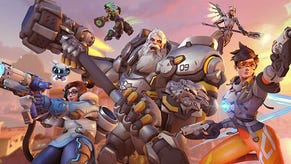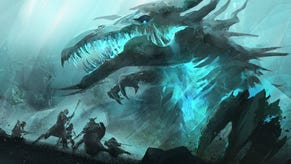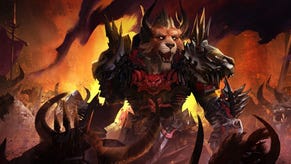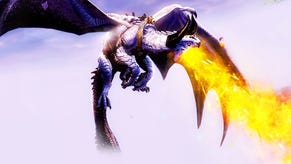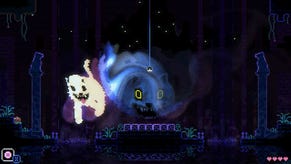Guild Wars 2
Wow factor.
A touch of class
On our visit to ArenaNet, we're given the chance to explore the starting area of the Norn – a race of tall, sturdy, Nordic-seeming huntsmen and women – as well as some adventuring from the middle of the game, around level 30. We can try out any of the six announced classes (there are more to come): Ranger, Elementalist, Warrior, Guardian, Necromancer and the freshly-minted Thief.
There are no healers as such; every class is effective in combat, can revive allies, and can equip one healing skill. Lead content designer Colin Johanson is emphatic about ArenaNet's rejection of the tank/healer/damage roles. "We're basically saying, listen, this as a core game mechanic is tired, we can do something better, we can do something more interesting than this... And that's what we've spent many years now perfecting and working on, and getting to the point that we feel we have a combat system that doesn't need it and, we feel, works better without it."
The Thief's healing skill causes this rogue-style combatant to leap backwards before healing itself, effectively setting up some of its ranged attacks, but running the risk of jumping into danger. It's a good example of how important imaginative skill-chaining and positioning are in Guild Wars 2.
Fall in a fight and you enter a "downed" state where you a have a small handful of special skills available to you. Finish one enemy with these within a time limit and you'll be revived; otherwise you can wait for any other player to bring you back, or resurrect at a nearby shrine. The downed state is exciting and panicky; I didn't manage to pull it off, but good knowledge of your downed skills and the ability to spot weakened enemies quickly should do the trick.
The class designs all have interesting twists. The Thief can steal items from any enemy that can be used against them as skills (steal a giant bird's feathers and throw them in its face to blind it); the Necromancer can summon and detonate crowds of explosive little minions (like Diablo III's Witch Doctor); the Guardian, a magical warrior, has attacks that are highly focused on positioning and different areas of effect, making it an unusually tactical melee class.
As in Guild Wars, you'll be collecting skills at each level – you can buy them ahead of time, for convenience – and slotting them into your mix-and-match 'deck' on the screen, split evenly between five attack skills and five utilities or buffs, including your heal. There's no base auto-attack, but any skill can be set to auto.
The skill design has been simplified, with a new focus on skills interacting with each other (shoot arrows through a wall of flame to add fire damage to them). Skills are also tied to your equipped weapons. You can switch between two weapon sets, and therefore two skill decks, at any time, effectively allowing you to hot-swap character builds in combat.
It's a fantastic system, offering huge flexibility but also streamlining and focusing your character, preventing the creep of dozens of buttons all over your screen that blights so many MMOs. Skills are mostly punchy and fun to execute, but their design is unproven. The principal worry is how team tactics will form in the absence of defined character class roles. ArenaNet assures us that interesting synergies exist, but we'll need to take that on trust; the clear advantage, though, is that players can fall into groups naturally without worrying about balanced composition.

